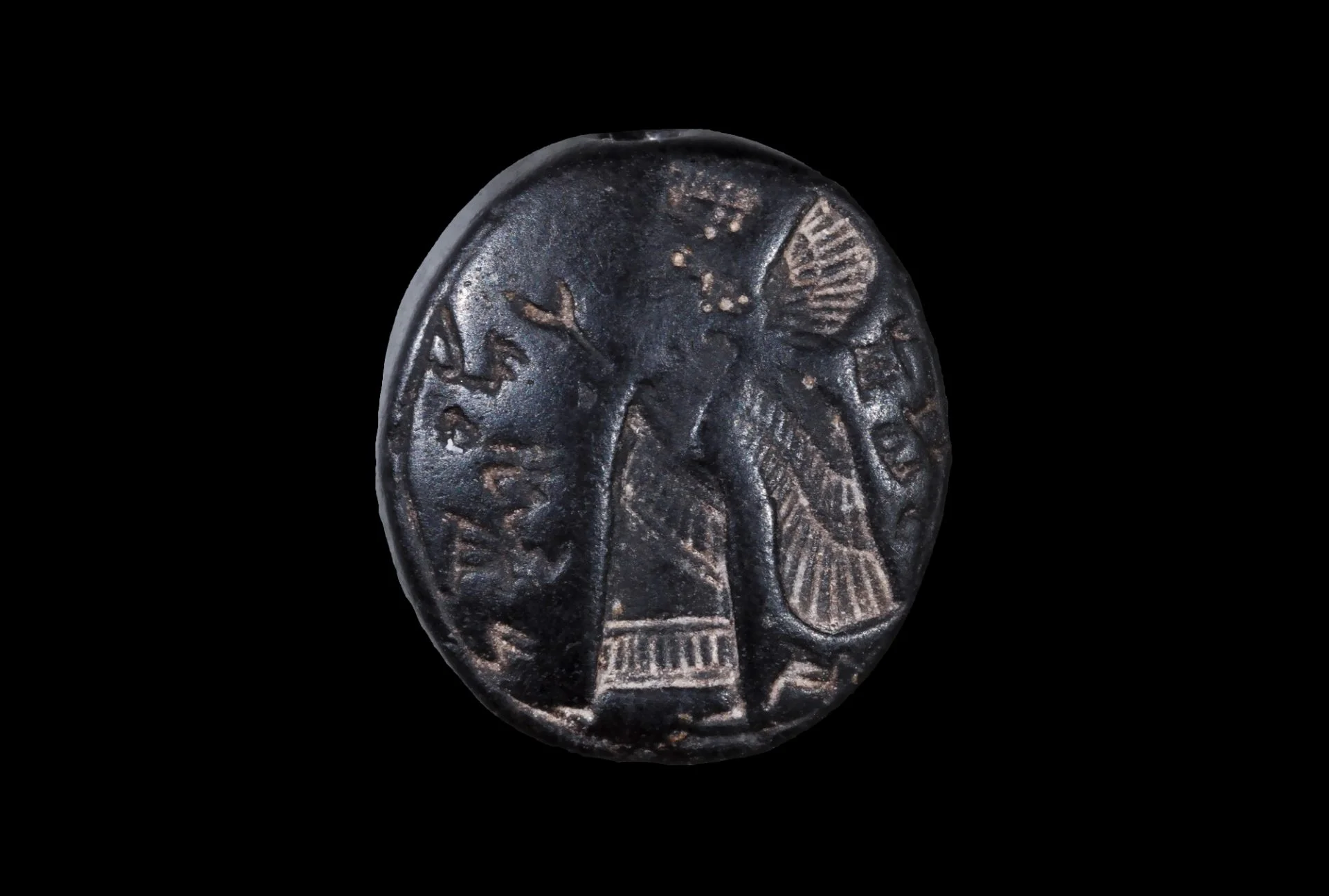Archaeologists from the Israel Antiquities Authority (IAA) have discovered a rare stone seal from the First Temple period during excavations of the Southern Wall of the Temple Mount in Jerusalem.
The seal, thought to be an amulet or tool for sealing legal documents is estimated to be around 2,700 years old and is inscribed with the name “LeYehoʼezer ben Hoshʼayahu” (meaning Yehoʼezer, the son of Hoshʼayahu) in paleo-Hebrew script.
Archaeologists suggest that the original owner, Hoshʼayahu, was a high-ranking official in the Kingdom of Judah. Upon Hoshʼayahu’s death, his son Yehoʼezer, inherited the seal and added the inscription of their names, perhaps to inherit the protective qualities of the amulet.
The name Yehoʼezer is mentioned in the Bible, specifically in Chron. I 12:7 in its abbreviated form – Yoʼezer, one of King David’s fighters.
the seal also has a carved winged figure wearing a long, striped shirt, and striding towards the right. The figure has a mane of long curls covering the nape of the neck, and on its head is a hat – or a crown.
Dr. Filip Vukosavović from the Israel Antiquities Authority, said: “This is an extremely rare and unusual discovery. This is the first time that a winged ‘genie’ – a protective magical figure – has been found in Israeli and regional archaeology. Figures of winged demons are known in the Neo-Assyrian art of the 9th-7th Centuries BC, and they were considered a kind of protective demon.”
The kingdom of Judah was subject to the hegemony of the Assyrian Empire and was likely influenced in aspects of culture and art.
Rabbi Amichai Eliyahu, said: “The spectacular and unique find discovered in the excavations of the Israel Antiquities Authority and the City of David opens another window for us into the days of the Kingdom of Judah during the First Temple period.”
Header Image Credit : Emil Aladjem
Sources : IAA





